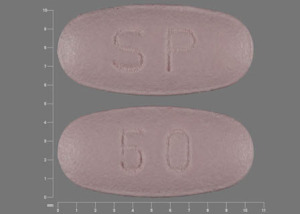Vimpat Disease Interactions
There are 4 disease interactions with Vimpat (lacosamide).
Anticonvulsants (applies to Vimpat) depression
Major Potential Hazard, Moderate plausibility.
Antiepileptic drugs can increase depression and suicidal thoughts or behaviors in patients receiving these drugs for any indication. Patients should be monitored for the emergence or worsening of depression, suicidal thoughts and unusual changes in mood or behavior. Caregivers and family should be alert for the emergence or worsening of symptoms. Behaviors of concern should be reported immediately to the healthcare providers.
References
- (2002) "Product Information. Tegretol (carbamazepine)." Novartis Pharmaceuticals
- (2001) "Product Information. Depakene (valproic acid)." Abbott Pharmaceutical
- (2001) "Product Information. Depakote (divalproex sodium)." Abbott Pharmaceutical
- (2001) "Product Information. Lamictal (lamotrigine)." Glaxo Wellcome
- (2001) "Product Information. Magnesium Sulfate (magnesium sulfate)." Abbott Pharmaceutical
- (2001) "Product Information. Trileptal (oxcarbazepine)." Novartis Pharmaceuticals
- (2008) "Product Information. Vimpat (lacosamide)." UCB Pharma Inc
- (2008) "Product Information. Banzel (rufinamide)." Eisai Inc
- (2013) "Product Information. Aptiom (eslicarbazepine)." Sunovion Pharmaceuticals Inc
Lacosamide (applies to Vimpat) CVD
Moderate Potential Hazard, Moderate plausibility. Applicable conditions: Cardiovascular Disease, Heart Disease, Myocardial Infarction
Dose dependent prolongation in PR interval has been observed with the use of lacosamide. This drug should be used with caution in patients with known conduction abnormalities (AV block, sick sinus syndrome) in patients with sodium channelopathies (e.g., Brugada syndrome), with severe cardiac disease (myocardial ischemia, heart failure, structural disease), or in treatment with other drugs that also prolong PR interval. An ECG is recommended before beginning treatment, and after dose titration to a steady maintenance dose.
References
- (2008) "Product Information. Vimpat (lacosamide)." UCB Pharma Inc
Lacosamide (applies to Vimpat) hepatic impairment
Moderate Potential Hazard, Moderate plausibility. Applicable conditions: Liver Disease
Patients with mild to moderate hepatic impairment should be observed closely during lacosamide dose titration. A maximum dose of 300 mg/day is recommended for these patients. Lacosamide has not been evaluated in patients with severe hepatic impairment, so its use is not recommended in this group of patients.
References
- (2008) "Product Information. Vimpat (lacosamide)." UCB Pharma Inc
Lacosamide (applies to Vimpat) renal impairment
Moderate Potential Hazard, Moderate plausibility. Applicable conditions: Renal Dysfunction
A maximum dose of 300 mg/day of lacosamide is recommended for patients with severe renal impairment (CrCl <30 mL/min) and in patients with end stage renal disease. Lacosamide is effectively removed from plasma by hemodialysis and a dose supplementation of 50% should be considered following this procedure. Dose titration should be done with caution in all renally impaired patients.
References
- (2008) "Product Information. Vimpat (lacosamide)." UCB Pharma Inc
Vimpat drug interactions
There are 136 drug interactions with Vimpat (lacosamide).
Vimpat alcohol/food interactions
There is 1 alcohol/food interaction with Vimpat (lacosamide).
More about Vimpat (lacosamide)
- Vimpat consumer information
- Check interactions
- Compare alternatives
- Pricing & coupons
- Reviews (158)
- Drug images
- Side effects
- Dosage information
- During pregnancy
- Generic availability
- Support group
- FDA approval history
- Drug class: miscellaneous anticonvulsants
- Breastfeeding
- En español
Related treatment guides
Drug Interaction Classification
| Highly clinically significant. Avoid combinations; the risk of the interaction outweighs the benefit. | |
| Moderately clinically significant. Usually avoid combinations; use it only under special circumstances. | |
| Minimally clinically significant. Minimize risk; assess risk and consider an alternative drug, take steps to circumvent the interaction risk and/or institute a monitoring plan. | |
| No interaction information available. |
Further information
Always consult your healthcare provider to ensure the information displayed on this page applies to your personal circumstances.


